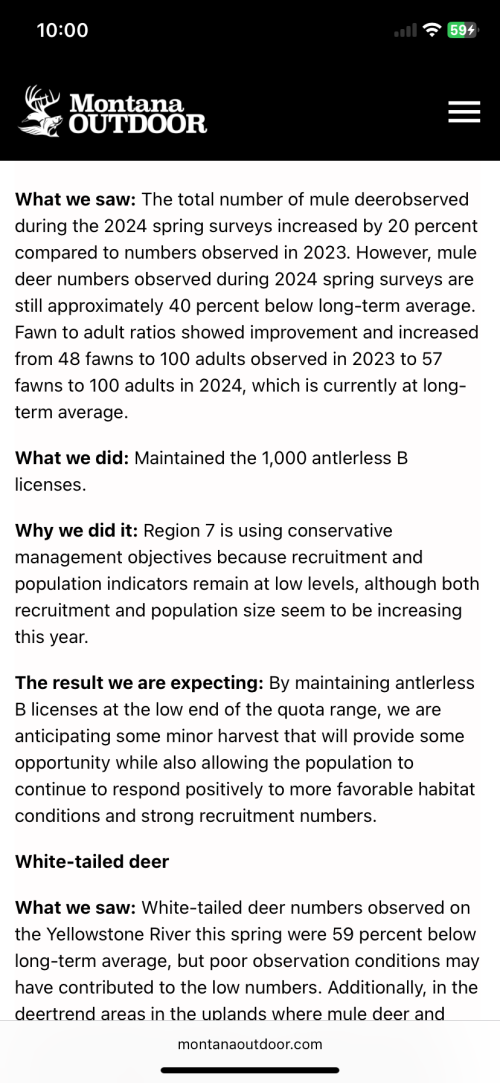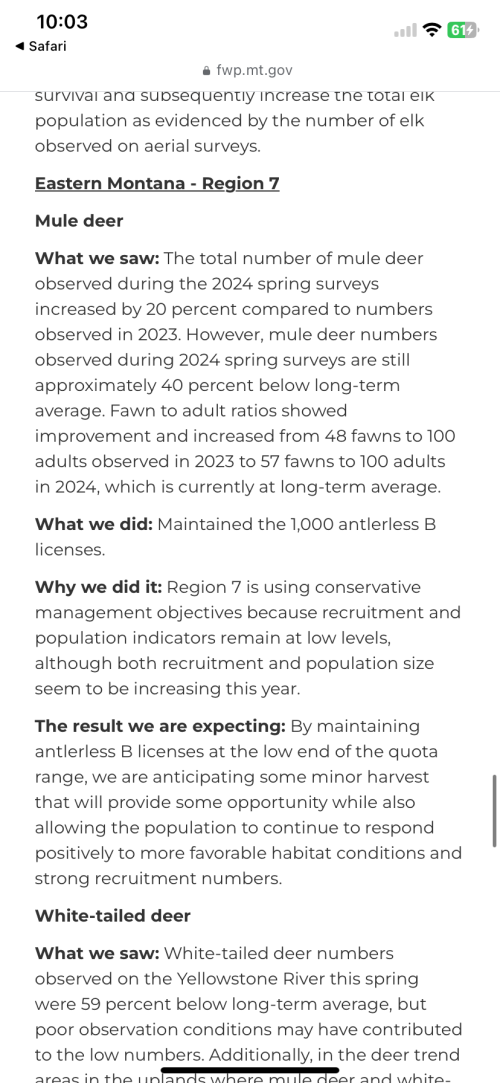BuzzH
Well-known member
The reality you're living in is crap mule deer hunting and Montana hunters and the FWP aren't going to change a thing.Well said @Nameless Range
I've somehow become the strawman for "someone who is content," so I will try to fix the record on that, because it's not what I've been saying. Mule deer management in Montana can improve, and it will. There's enough people working on new ideas and we've reached a tipping point. I might vehemently disagree with @Gerald Martin over how entitled the already entitled ought to be, but I think it is great that he, @cgasner1, @sclancy27, @antlerradar, @bigsky2, and others are putting ideas in the world that are moving the needle.
My entire argument here is that we don't have to just be negative and dream of something that will never exist again because we live in 2025 and not 1985--when instead we can meet people where they are at, focus on incrementally improving the situation, and look at the whole picture and implement the whole picture when we make changes.
If the people on this forum want to get anywhere with mule deer management in Montana they need to stop being jerks to locals, those that are content, new to the conversation, or those who see things differently than they do, and instead approach them with positivity and a message of hope for something even better than what they have now. "Burn it all down" and "FWP sucks" doesn't help at all, and is counter-intuitive. It's what leads people like Hinkle to introduce bills to preserve our mule deer season in statute.
I still care and I live in reality. Maybe that's the biggest difference between us.
Spread the word about the great mule deer reality in Montana, 12 weeks of chasing 4.5 year old bucks around every sage brush, just look at the FWP data for proof! Don't even have to lace 'em up it's so great!
Keeps the honyockers out of my whitetail spots.





